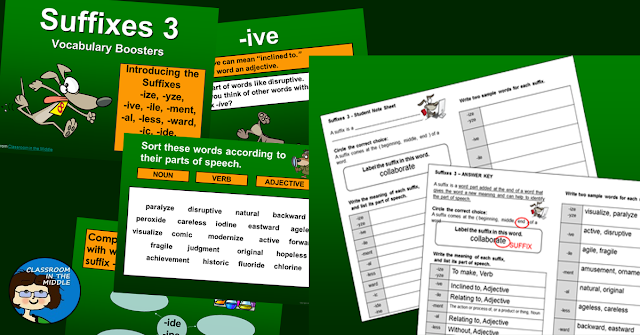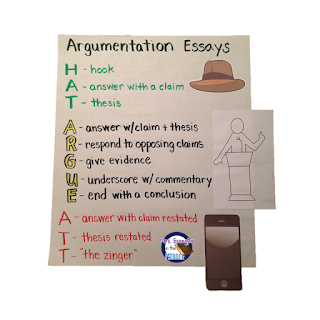Vocabulary lessons – where do you even
start? If you’re a new teacher, you’re
probably already thinking of a long list of skills that you’ll need lessons and
materials for. If you’re an experienced
teacher, maybe you have a big collection of resources, but the task of
organizing them for a new year can still seem huge! I think that’s because vocabulary covers so
much ground, and so many details. I know
that I have arranged, and rearranged, my vocabulary lessons numerous times over
the years!
Just a few of the things you’re sure
to be touching on at some time during the year –
·
The Basics – prefixes, suffixes, Greek and
Latin roots. This could be a full year
of vocabulary lessons in itself!
·
Word Meanings – understanding specific meanings of
words in their reading, and choosing vocabulary for their own writing – synonyms
and antonyms, denotations and connotations, using context clues, understanding
multiple meaning words, symbolism, and figurative language. Another tall order!
·
Content Vocabulary – poetry terms, literary terms, and
even terms related to vocabulary itself!
·
Story Vocabulary – interesting words from the stories
and articles your class reads.
Some people have a strict order they
follow to keep it all organized. Others
prefer to introduce vocabulary topics as they come across good stories to use
as mentor texts. I usually started with
a few specific topics at first, probably prefixes and synonyms/antonyms. Then things tended to get more flexible after
that!
Wherever you decide to start, having
students keep an organized vocabulary notebook can be a great help. Students can set it up with sections for the
various topics you want to cover, and then add to each section bit by bit as
you add information and new words throughout the year. In fact, I used this idea when revising my
prefix, suffix, and root PowerPoints over the summer. At the end of each presentation, I added a basic
note sheet for students to complete as they viewed the slides, along with a
completed sheet for students who need that.
Students can complete the note sheet for just the prefixes, suffixes, or
roots that you are working on at the moment and glue it in their notebook to
add to later. Here is a picture of the
note sheets and a few of the slides from my Suffixes 3 PowerPoint.

Of course, mentor texts are great for
introducing something new, and the great thing about vocabulary is that you can
find examples for many of the topics – especially prefixes, suffixes, and roots
– just about anywhere! For more complex
vocabulary topics, like connotations and denotations, there are still plenty of
examples; it just takes a little more advance prep to find a good piece of text
with several examples that you want to use.
Do you also keep a list of websites
with good vocabulary activities for each topic?
Or maybe a Pinterest board for each?
If you do, be sure to include ReadWriteThink, a site where teachers
contribute lessons and other resources.
You can search for a specific topic and narrow your search to either
lesson plans or student interactives. I
searched for prefix lessons for 6th grade and found 3 complete
lessons plus one student interactive. My
favorite was the game called Make-a-Word, which is played like the old
fashioned card game, rummy.
What about some other vocabulary
organizers? Word lists? A word wall?
Vocabulary cards? Anchor charts? Any or all of these will help keep things
organized as you add more vocabulary rules, words, and examples during the
year!
Why so much organization for this one
topic of vocabulary? Well, as strange as
it may sound, I think it is so that you actually can remain pretty flexible
throughout the year. With basic
organization in place, it frees you up a little bit to incorporate a new idea
or a few new words whenever you come across them. After discussing them in class, just add them
in to one of your existing structures.
So, to me, these are the basics to
have in place:
- ·
Attractive
anchor charts (or plans to create them with the class)
- ·
Student
notebooks, and a plan for how they should be organized
- ·
Mini-lessons
to introduce each new vocabulary topic
- ·
Short
practice activities to review individual skills as needed
But what do you think? How flexible or how structured do you think
vocabulary instruction should be for middle grade kids? I would love to hear what works best in your
classroom!
Pin to save for later:




















